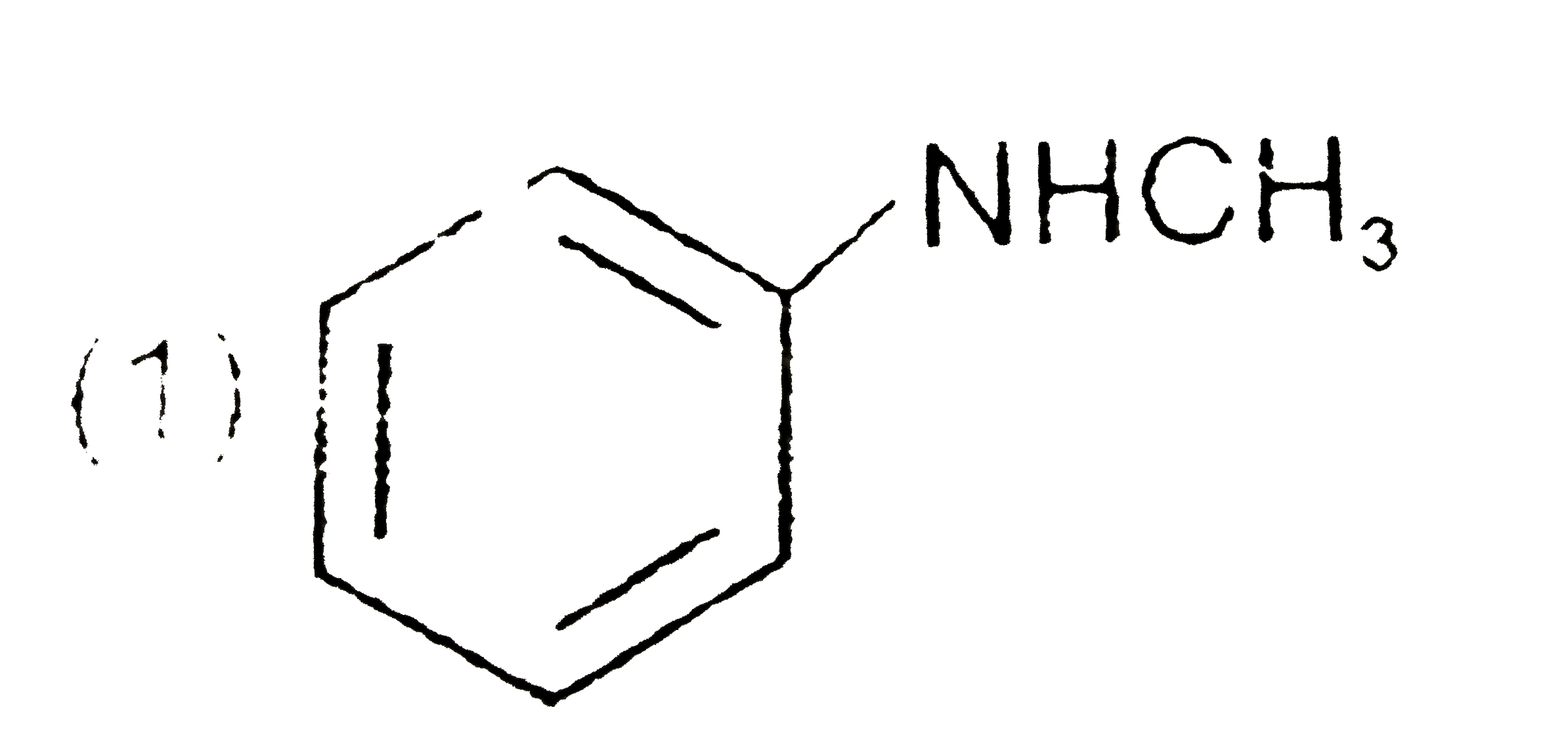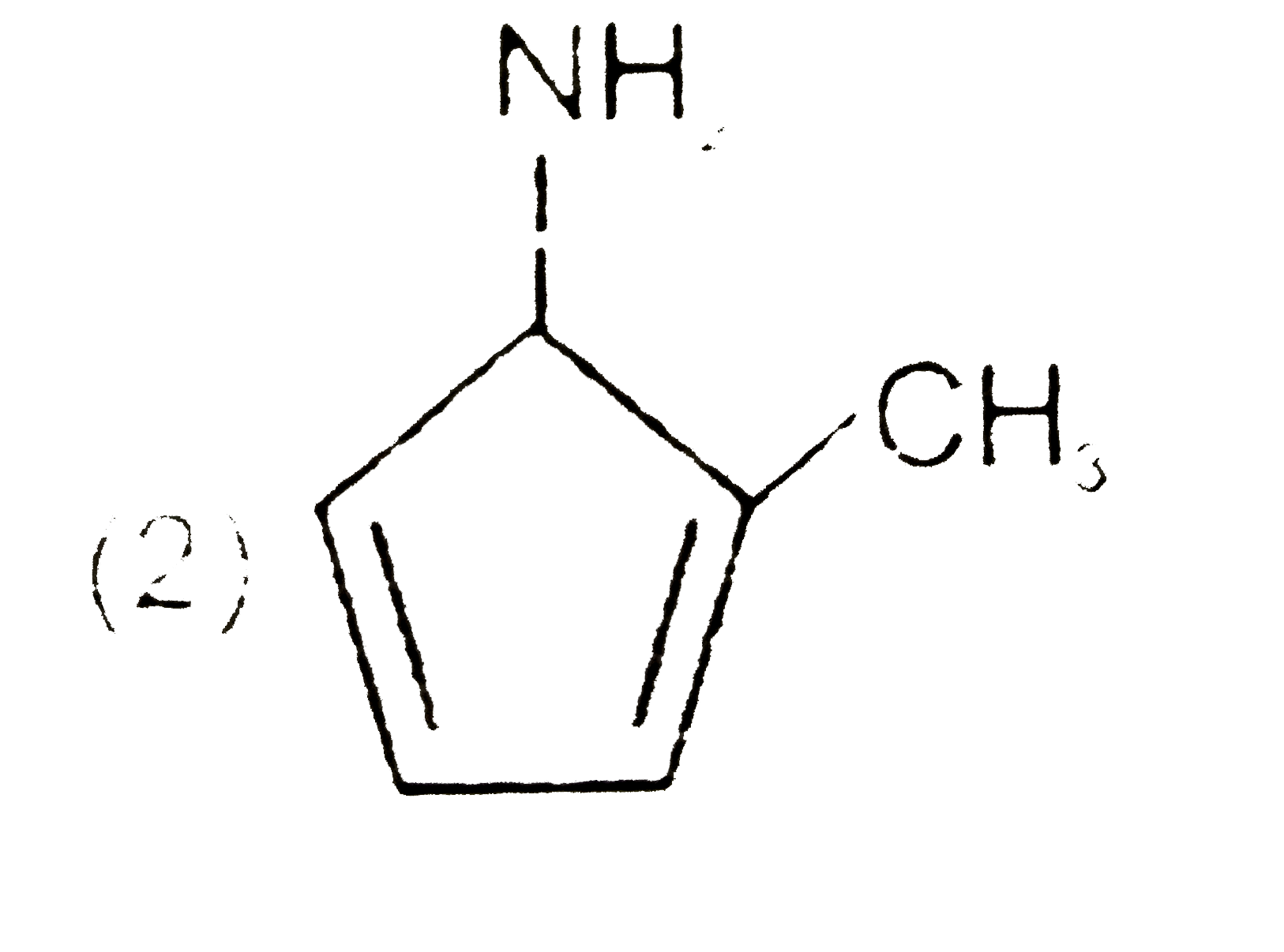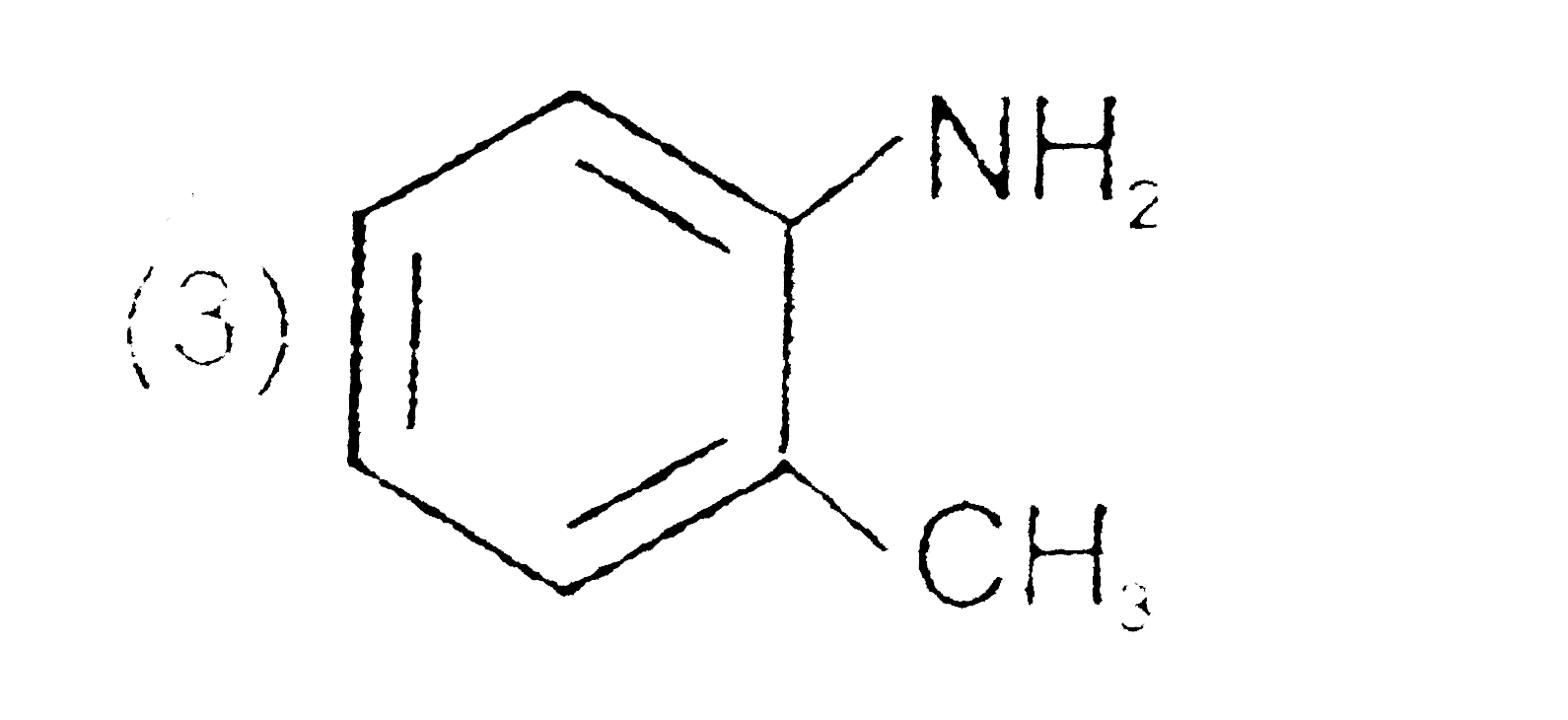The compound X(C7H9N) reacts with benzensulfonyl chloride to give Y(C13H13NO2S) which is insoluble in alkali. The compound X is-




The correct Answer is:A
To solve the problem, we need to identify the compound X (C₇H₉N) that reacts with benzene sulfonyl chloride to form compound Y (C₁₃H₁₃NO₂S), which is insoluble in alkali.
1. Understanding the Reaction:
- The reaction involves compound X (C₇H₉N) reacting with benzene sulfonyl chloride (C₆H₅SO₂Cl). This is a typical reaction involving amines and sulfonyl chlorides, known as the Hinsberg test, which can help distinguish between primary, secondary, and tertiary amines.
2. Analyzing the Products:
- The product Y (C₁₃H₁₃NO₂S) formed from this reaction is stated to be insoluble in alkali.
- According to the Hinsberg test:
- Primary amines yield products that are soluble in alkali.
- Secondary amines yield products that are insoluble in alkali.
- Tertiary amines do not react with the reagent.
3. Determining the Type of Amine:
- Since the product Y is insoluble in alkali, we can conclude that compound X must be a secondary amine.
4. Finding the Structure of X:
- The molecular formula of X is C₇H₉N.
- A secondary amine can be represented as R₂NH, where R groups are hydrocarbon chains or rings.
- To satisfy the formula C₇H₉N, we can consider possible structures. One likely candidate is N-ethyl aniline (C₆H₅NHCH₂CH₃), which has a total of 7 carbons, 9 hydrogens, and 1 nitrogen.
5. Verifying the Reaction:
- When N-ethyl aniline reacts with benzene sulfonyl chloride, it will form N-ethyl benzene sulfonamide (C₆H₅SO₂N(CH₂CH₃)), which is indeed C₁₃H₁₃NO₂S.
- This product is consistent with the information given about Y being insoluble in alkali.
6. Conclusion:
- Therefore, the compound X is N-ethyl aniline (C₇H₉N).
Final Answer:
The compound X is N-ethyl aniline (C₇H₉N).
- The reaction involves compound X (C₇H₉N) reacting with benzene sulfonyl chloride (C₆H₅SO₂Cl). This is a typical reaction involving amines and sulfonyl chlorides, known as the Hinsberg test, which can help distinguish between primary, secondary, and tertiary amines.
- The product Y (C₁₃H₁₃NO₂S) formed from this reaction is stated to be insoluble in alkali.
- According to the Hinsberg test:
- Primary amines yield products that are soluble in alkali.
- Secondary amines yield products that are insoluble in alkali.
- Tertiary amines do not react with the reagent.
- Since the product Y is insoluble in alkali, we can conclude that compound X must be a secondary amine.
- The molecular formula of X is C₇H₉N.
- A secondary amine can be represented as R₂NH, where R groups are hydrocarbon chains or rings.
- To satisfy the formula C₇H₉N, we can consider possible structures. One likely candidate is N-ethyl aniline (C₆H₅NHCH₂CH₃), which has a total of 7 carbons, 9 hydrogens, and 1 nitrogen.
- When N-ethyl aniline reacts with benzene sulfonyl chloride, it will form N-ethyl benzene sulfonamide (C₆H₅SO₂N(CH₂CH₃)), which is indeed C₁₃H₁₃NO₂S.
- This product is consistent with the information given about Y being insoluble in alkali.
- Therefore, the compound X is N-ethyl aniline (C₇H₉N).
The compound X is N-ethyl aniline (C₇H₉N).
Similar Questions
A compound (X) having the molecfular formula C3H9N reacts with benzenesulphonyl chloride to form a solild insoluble in alkali is . The compound (X) is
View SolutionA colours substance 'A' (C6H7N) is sparingly soluble in water and gives a water soluble compound 'B' on treating with mineral acid. On reaction wih CHCl3 and alcoholic potash 'A' produces an obnoxious smell due to the formation of compound 'C'. Reaction of 'A' with benzensulphonyl chloride gives compound 'D' which is soluble in alkali. WIth NaNO2 and HCl, 'A' forms compound 'E' which reacts with phenol in alkaline medium to give an orange dye 'F'. Identify compounds 'A' to'F'.
View Solution
Knowledge Check
- Question 1 - Select One
Compound [X]C4H11N reacts with p− toluene sulphonyl chloride in aqueous NaOH to give a solid. The compound [X] is :
ACH3−CH2−CH2−CH2−NH2BH3C−C∣CH3H−CH2−NH2CCH3CH2−NH−CH2−CH3DH3C−CH2−N∣CH3−CH3
A colours substance 'A' (C6H7N) is sparingly soluble in water and gives a water soluble compound 'B' on treating with mineral acid. On reaction wih CHCl3 and alcoholic potash 'A' produces an obnoxious smell due to the formation of compound 'C'. Reaction of 'A' with benzensulphonyl chloride gives compound 'D' which is soluble in alkali. WIth NaNO2 and HCl, 'A' forms compound 'E' which reacts with phenol in alkaline medium to give an orange dye 'F'. Identify compounds 'A' to'F'.
View SolutionA colours substance 'A' (C6H7N) is sparingly soluble in water and gives a water soluble compound 'B' on treating with mineral acid. On reaction wih CHCl3 and alcoholic potash 'A' produces an obnoxious smell due to the formation of compound 'C'. Reaction of 'A' with benzensulphonyl chloride gives compound 'D' which is soluble in alkali. WIth NaNO2 and HCl, 'A' forms compound 'E' which reacts with phenol in alkaline medium to give an orange dye 'F'. Identify compounds 'A' to'F'.
View SolutionA colours substance 'A' (C6H7) is sparingly soluble in water and gives a water soluble comound 'B' on treating with mineral acid. On reaction wih CHCl3 and alcoholic potash 'A' produces an obnoxious smell due to the formation of compound 'C'. Reaction of 'A' with benzensulphonyl chloride gives compound 'D' which is soluble in alkali. WIth NaNO2 and HCl, 'A' forms compound 'E' which reacts with phenol in alkaline medium to give an orange dye 'F'. Identify compounds 'A' to'F'.
View SolutionGive the structure of (A) (explanations are not required). A(C3H9N) reacts with bezenesulphonyl chloride to give a solid insoluble in alkali'.
View SolutionA compound A having molecular formula (C3H9N) on treatment with benzenesulfonyl chloride gives an insoluble solid. Identify A
View SolutionA compound Z with molecular formula C3H9N reacts with C6H5SO2Cl to give a solid, insoluble in alkali. Identify Z.
View SolutionAn organic compound (A) (C5H7OCl) reacts rapidly with ethanol to give (B) (C7H12O2). (A) also reacts with water to produce an acid which reacts with bromine to give (C ) (C5H8Br2O2). (B) on boiling with H2SO4 forms an acid (D). When (D) is oxidised with KMnO4 an acid (E ) (C4H6O3) is produced. On mild heating, (E ) gives (F) (C3H6O) which cannot be oxidised by ammoniacal AgNO3. Identify the compounds (A) to (F).
View Solution

